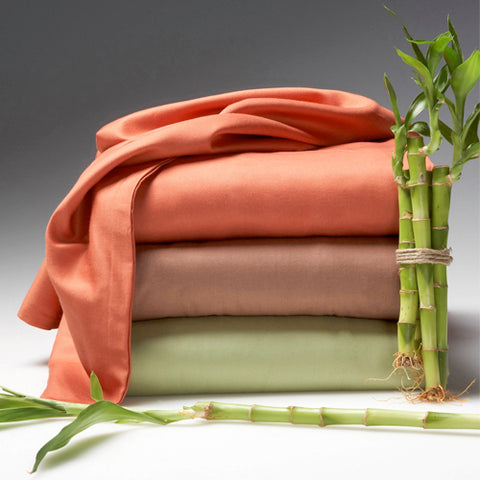Top Reasons On Choosing Hemp Clothing
Wiki Article
Why Is It That Hemp Is More Biodegradable, Resilient, And Regenerative Than Cotton For Example?
Hemp's inherent properties, as well as its cultivation methods makes it more biodegradable and durable than cotton. Here's why- Biodegradability-
Natural FiberNatural Fiber Hemp is a plant that naturally produces fiber and its fibers are biodegradable. When they are discarded hemp clothes and textiles are broken down naturally, and then return to the earth without leaving behind long-lasting waste. Contrast this with synthetic fibers such as polyester, which could require hundreds of years to decompose.
Hemp Textiles do not contain synthetic additives They do not contain synthetic additives. Hemp fibers usually don't have any synthetic additives. Certain cotton fabrics, on the other hand, may have been treated using synthetic chemicals such as finishing and dyes that hinder biodegradation.
Durability-
Fiber Strength Hemp fibers are known for their strength and durability. Textiles and clothing made of hemp are less likely to get damaged, and last longer than some cotton products. Hemp garments are durable and can be washed many often before showing signs of wear.
Hemp fabrics are less likely to pill (the formation of a small fuzzy ball on the surface of the fabric) as compared to cotton. This contributes to their durability and their quality.
Regenerative Agriculture-
Soil health- Hemp cultivation has the potential to regenerate soil when done in a sustainable manner. Hemp's deep roots stop soil erosion and compaction, and can improve soil health through an increase in microbial activity and aeration. This regenerative component helps keep the soil more suited for future crop production.
Low environmental impact. The methods for sustainable hemp production are often characterized by minimal use of pesticides and weedicides. This reduces environmental harm. Cotton farming, which relies on synthetic chemicals could result in soil degradation and water contamination.
Water Efficiency-
Hemp generally requires less water than cotton. Its drought-resistant properties mean it thrives even without irrigation or in rain-fed conditions. This makes it more efficient with water especially in areas in which water resources are scarce.
Hemp is a great crop to be included in rotational systems. This can help improve the health of soil as well as decrease the likelihood of disease development and soil loss. The practice of crop rotation in the cotton industry isn't as common.
Hemp's versatility allows it to be used for many different applications like clothing, textiles, paper and building materials. The versatility of hemp implies that it can be used to help support many industries using eco-friendly, sustainable practices.
While hemp offers these advantages however, it is important to remember that both hemp and cotton can be grown sustainably or in a non-sustainable manner, based on the practices of farming and methods of processing. It is recommended to select hemp products that are made using sustainable and ethical methods. This will increase the benefits for the environment. Similar to that selecting organic cotton products may mitigate some of environmental issues associated with conventional cotton production. View the top more tips here for hemp clothes for site tips including t shirt hemp, hemp clothing womens, hemp baja hoodie, patagonia island hemp pants, hemp and cotton fabric, hemp shirts, hemp shorts patagonia, womens hemp clothing, hemp cotton fabric, hemp work pants and more.

What Are The Benefits Of Hemp Fibers In Carbon Sequestration, Sustainability, And Crop Rotation?
Hemp fibers are a green choice in textile and agriculture production. They can help with carbon sequestration and sustainability.
Hemp grows quickly and matures in 70-120 days, depending on variety and conditions of growth. In the process of photosynthesis, hemp plants absorb the CO2 in the atmosphere during their rapid growth. Carbon uptake is a significant factor in carbon sequestration and reduces CO2 levels in the air.
The high amount of biomass produced by hemp is well known. The thick foliage of the plant and its tall stalks yield an enormous amount of organic matter. If the biomass is utilized in the soil for various purposes, it will assist in increasing the quantity of organic carbon.
Sustainability:
Hemp is grown with less chemical use than cotton and other crops. Its natural resistance reduces its requirement for chemical intervention. Organic hemp farming, in particular, emphasizes sustainable agriculture by avoiding synthetic chemical substances.
Water Efficiency- Hemp is a relatively water-efficient crop that can flourish with little irrigation, particularly when compared with traditional cotton that is water-intensive. This is why it is more sustainable in regions that have limited water resources.
Soil Health- Hemp's deep root system is able to improve the soil's health. Its roots can help stop soil erosion by stabilizing the soil's structure and decreasing runoff. Hemp cultivation also improves the activity of soil microbes, promoting nutrient cycling and soil fertility overall.
Crop Rotation Hemp can be incorporated into crop rotation systems. Crop rotation is the process of alternating of various crops within a single field. This can help to break cycle of illness and pests and reduce soil depletion and strengthen soil structures. Hemp is an excellent crop to rotate and its role contributes to sustainable farming.
Crop Rotation-
Hemp crops can be cultivated in rotation with other crops including legumes, grains, and vegetables. This diversification will help maintain the health of soils. It also lowers the threat of attracting pests and diseases that are particular to crops, and help promote a balanced nutrition cycling.
Hemp’s deep roots penetrate the soil and allow it to aerate, reducing compacting and increasing water infiltration. The improved soil structure after a hemp crop benefits the subsequent plants.
Summary Hemp fibers can positively impact soil health, and are suitable for crop rotation as well as enhancing carbon sequestration as well as sustainability. They achieve this by rapid growth, biomass, minimal chemical use as well as their water efficiency and ability to work with crop rotation methods. This makes hemp cultivation a green and sustainable agriculture practice. Read the top hemp clothes for more info including 100 hemp t shirt, patagonia hemp shorts, nomad hemp wear, wholesale hemp fabric, hemp shirts, hemp long sleeve shirt, patagonia hemp island pants, hemp t shirts wholesale, organic hemp underwear, hemp yoga pants and more.

What Are The Advantages Of Wearing Bamboo Clothing When It Comes To Eco-Friendliness And Comfort?
Bamboo clothing offers many benefits for comfort as well as the environment.
Softness- Bamboo fabric is known for its extraordinary softness. It is smooth and silky to the feel. Bamboo clothing is popular for its luxurious softness, making it a great option for activewear, loungewear and intimate clothing.
Bamboo fibers are known for their ability to draw moisture away and they are breathable. Air can circulate through the gaps, keeping you cool in hot temperatures. The properties that wick moisture away from the fabric help to remove sweat from the skin. This reduces the sensation that your clothes are damp.
Bamboo clothing is a great option for thermoregulation. Bamboo clothing can help keep you warm in cooler temperatures, by trapping warmth close to your body. It also helps to stay cool during hot weather because it allows the excess heat and moisture to escape. Bamboo clothing is appropriate to wear all year round because it is able to adapt to various temperatures.
Bamboo fabric is hypoallergenic and soft on sensitive skin. Bamboo fabric will not cause allergies or irritation. This makes it a comfortable choice for individuals with skin sensitivities or allergies.
Bamboo fibers are resistant to odors due to their natural antimicrobial properties. Bamboo clothing keeps its freshness even when you are physically active.
Environment-
Sustainability- The bamboo plant is a sustainable, renewable resource. It is one of the fastest-growing species and requires a small amount of water. There are no herbicides, pesticides or other chemicals are required for its cultivation. Bamboo can grow from the roots, so it is possible to harvest without harming the plant.
Bamboo has a low water consumption. It is able to thrive without much irrigation and is often developed by the rain alone. This reduces the environmental impact associated from agricultural water use.
Biodegradability Bamboo clothes are biodegradable which means it degrades naturally over time when disposed of. This feature reduces waste that is not biodegradable textiles in landfills.
Carbon Sequestration. Bamboo plants are able to sequester carbon dioxide out of the atmosphere when they grow rapidly. As a result, bamboo cultivation is carbon sinks, assisting to combat climate change by reducing greenhouse gas emissions.
Chemical Reduction - The manufacturing and processing of bamboo textiles typically requires fewer chemicals than some other textiles. This can help reduce the environmental impact that the manufacturing of textiles produces.
Closed-Loop Systems Bamboo fabric production utilizes closed loop processes that recycle water and chemicals. This reduces waste and pollution.
Important to note is that the environmental impact can depend on the manufacturing process, and whether the bamboo used was sourced from ethically and sustainably managed bamboo forests. To achieve the greatest environmental benefits buyers should opt for bamboo clothing produced with eco-friendly and ethical practices. Follow the best bamboo clothing for blog examples including short bamboo, bamboo yoga leggings, bamboo shorts womens, bamboo yoga wear, cozy earth clothes, bamboo yoga wear, bamboo pants, bamboo jeans ross, long sleeve bamboo t shirt, preemie bamboo pajamas and more.
